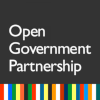Reporting on Gender Wage Gaps (IL0040)
Overview
At-a-Glance
Action Plan: Israel Action Plan 2023-2025 (June)
Action Plan Cycle: 2023
Status:
Institutions
Lead Institution: Equal Employment Opportunities Commission at the Ministry of Economy and Industry
Support Institution(s): Civil society NGOs will be selected following analysis of the data
Policy Areas
Digital Transformation, Gender, Inclusion, LaborIRM Review
IRM Report: Israel Action Plan Review 2023-2025
Early Results: Pending IRM Review
Design i
Verifiable: Yes
Relevant to OGP Values: Yes
Ambition (see definition): Low
Implementation i
Completion: Pending IRM Review
Description
What is the current situation or problem that the commitment addresses?
Pursuant to Amendment No. 6 to the Male and Female Workers (Equal Pay) Law, 5756-1996 (hereinafter: “the Law”), all private and public entities that employ more than 518 male and female employees are required to produce an annual internal report and a public report detailing wage gaps at the place of employment between men and women. The Law stipulates the contents of the report, but there are ambiguities that leave a lot of room for discretion as to how and what information to publish (the Equal Employment Opportunities Commission has published guidelines for employers, and sample reports, in order to address these ambiguities). The situation makes it impossible to examine the veracity of the reports, since each company can divide its employees into groups according to different parameters and according to its broad discretion. The information today is also not published on an orderly and uniform platform, and thus even if various parties, including the government, try to generate insights from the reports, extensive human work is required to extract and clean up the data.
What is the commitment?
Optimization of the reporting process and supervision and analysis of data: Creating a dedicated portal within which all employer reports will be published (in PDF form). Writing and circulating a binding standard/annual recommendation of the Equal Employment Opportunities Commission. Creating a uniform data standard for wage gap reports, which employers must publish and upload to the portal in a machine-readable format (CSV, XLS) – dependent on the possibility of changes to legislation as the situation allows. Creating a central mechanism to analyze public reports, derive insights from them and promote companies that have really made a change – this will be carried out by a civil society organization. Here, there will probably be a need for manpower and budgets. Improving and analyzing data from the reports, converting the data into a format for analysis, analyzing all the data to gain insight into trends and presenting them to the public.
How will the commitment address the problem?
The reports that the employers are obligated to produce in compliance with the Law are aimed at increasing transparency and serve as a tool to raise awareness and create a change in wage gaps in the labor market. To enhance transparency, it is necessary to ensure that the reports are accessible to the public, that the online location of their publication is clear, and that there are uniform parameters according to which all employers are obligated to file their reports.
Why is the commitment relevant to OGP?
Creating a dedicated portal for reports will help make the public reports accessible to the public. Creating a uniform format for reports and a dedicated portal for them will help improve the law. Testing and analyzing the reports and conducting research on the topic will help raise awareness and in setting policy to promote a more equal labor market and reduce gaps between men and women.
How does the commitment contribute to inclusion and equality?
The purpose of the reports is to increase transparency and reduce wage gaps in the labor market. This commitment is intended to enable better fulfillment of the law and promote gender equality.
Milestone with deliverable | Start date - End date
Equal Employment Opportunities Commission Round Table on the Equal Pay Law/Publication of reports | February 2023 - February 2023
Guidelines for the formulation of a uniform format of the Law that will not only be sent to certain employers but also published for public perusal. | December 2023 - March 2024
Establishing an advisory forum for the commitment (Representatives from the National Digital Agency, the JDC and civil society) | November 2023 - End of 2025
Specification of an internet portal that will concentrate all employer data on wage gaps | December 2023 - March 2024
Uploading a platform for uniform publishing of data | Mid-2024 - 2024 year-end
Annual analysis of reports uploaded to the portal to understand extraordinary trends and data that can help government and civil society understand what has changed. The analysis will include the conversion of data into a format for analysis, the analysis itself and presenting it in an interactive format to the public. | November-December 2023 - Start of 2025
